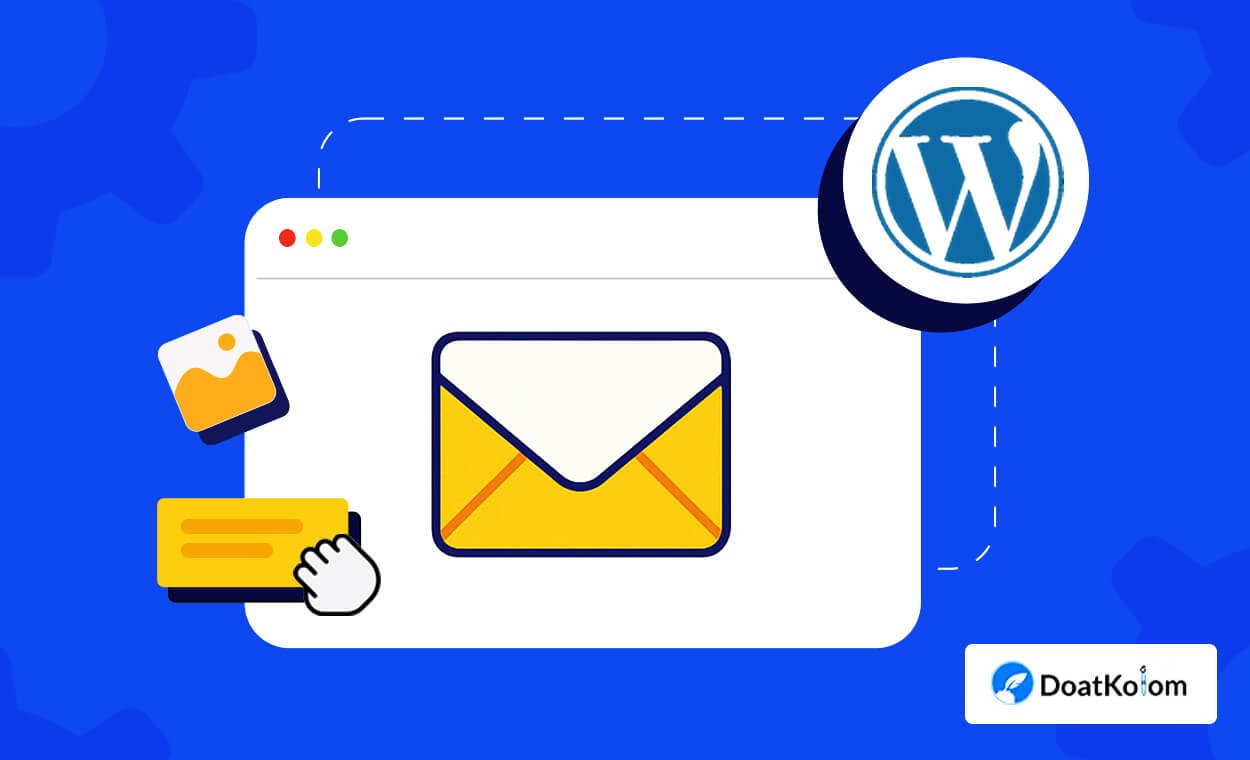Email marketing is one of the most effective ways to reach your audience, but creating beautiful, responsive emails directly from WordPress has often been a challenge—until now.
With the rise of dedicated email builders for WordPress, crafting stunning campaigns no longer requires coding skills or third-party software.
These tools are purpose-built to work seamlessly within the WordPress ecosystem, giving you the power to design, automate, and manage emails without leaving your dashboard.
In this blog post, we’ll explore the essential components—the real nuts and bolts—that make a WordPress email builder efficient, flexible, and a must-have for modern website owners.
So, without further ado, let’s dig deeper.
What is an Email Builder in WordPress?
An email builder in WordPress is a plugin or tool that allows you to visually create and customize email templates directly within your WordPress dashboard—without needing to write any code. These builders usually offer drag-and-drop interfaces, pre-designed blocks, and styling options to help users design professional emails that match their branding.
They are commonly used to build:
- Newsletter templates
- Transactional emails (order confirmations, password resets, etc.)
- Marketing campaigns
Most email builders integrate with email services like Mailchimp, Sendinblue, or WooCommerce. Some also work with form plugins like Contact Form 7 or WPForms to send custom email notifications. The key benefits include ease of use, branding control, and consistency across emails.
How Email Builder Plugins Work in WordPress
Email builder plugins in WordPress simplify the process of creating, customizing, and sending emails right from your site. They combine intuitive interfaces with backend logic to deliver personalized, professional-looking messages without coding.
These plugins typically come with a drag-and-drop editor, letting you design emails using pre-built blocks like text, images, buttons, and dividers. Once designed, the plugin generates clean HTML email code that’s compatible with major email clients. You can usually preview, test, and schedule these emails directly within WordPress.
Behind the scenes, the plugin connects with your website’s core functions—like WooCommerce orders, contact form submissions, or user registrations. It hooks into these triggers to send out tailored emails automatically. Many also integrate with SMTP services or third-party platforms (e.g., Mailchimp or SendGrid) to improve deliverability and tracking.
Benefits of Using an Email Builder in WordPress
Crafting compelling emails doesn’t have to be complicated—especially when you’re using WordPress. You can effortlessly design, automate, and personalize your campaigns with an email builder.
i. Simplifies the email design process
An email builder in WordPress allows you to create beautiful, professional emails without touching a line of code. With drag-and-drop functionality and pre-designed templates, even non-tech users can build engaging emails with ease.
This saves time and eliminates the need to hire developers or designers. You can maintain full creative control while ensuring your emails stay on-brand.
ii. Seamless integration with WordPress plugins
Most WordPress email builders integrate smoothly with major plugins like WooCommerce, Contact Form 7, Gravity Forms, and membership tools. This allows you to trigger emails based on user actions like purchases, sign-ups, or form submissions.
These automations help streamline your communication strategy and enhance customer engagement at every step.
iii. Responsive and mobile-friendly design
Emails built with WordPress email builders are responsive by default. This means they automatically adjust to look great on desktops, tablets, and smartphones.
This responsiveness boosts your open and click-through rates since your emails stay readable and attractive across all devices.
iv. Real-time preview and editing
Email builders offer live preview features that let you see your email design as you build it. You can experiment with layouts, fonts, colors, and images while instantly visualizing changes.
This eliminates guesswork and speeds up the design process, making it easier to fine-tune your content before hitting send.
v. Consistent branding across campaigns
Using an email builder ensures design consistency across your newsletters, promotions, and transactional emails. You can save your custom templates or styles and reuse them across multiple campaigns.
This builds brand recognition and trust, which is essential for long-term audience retention and conversion.
vi. Supports dynamic content and personalization
Many advanced email builders support dynamic content blocks, merge tags, and conditional visibility. This lets you tailor emails to each recipient based on their preferences, behavior, or profile data.
Such personalization increases relevance, which often leads to higher engagement and lower unsubscribe rates.
Difference Between Email Builder and Email Marketing Plugin
When it comes to email communication in WordPress, two tools often come into play—email builders and email marketing plugins. Though they sound similar, they serve very different purposes in your workflow.
Purpose and functionality
An Email Builder focuses on the design and layout of your emails. It provides drag-and-drop tools, templates, and styling options so you can create visually appealing emails without coding.
An Email Marketing Plugin, on the other hand, handles the strategy and automation side—like managing subscribers, sending bulk emails, setting up campaigns, and tracking performance.
Core features
Email builders are equipped with tools for customizing headers, adding images, formatting text, and creating reusable templates. Their goal is to make your emails look professional and on-brand.
Email marketing plugins come with list segmentation, campaign scheduling, autoresponders, and analytics. They help you reach the right audience at the right time with measurable results.
Integration and use case
Email builders are often used in combination with marketing tools—they don’t usually handle sending or list management. Instead, they focus on crafting the email content that’s later used in a campaign.
Email marketing plugins are all-in-one platforms that manage both the sending process and subscriber data. Some include built-in builders, but they’re more about the bigger picture—email strategy and execution.
How to Choose an Email Builder for WordPress
Choosing the right email builder in WordPress can shape how your audience experiences your brand. Before installing just any plugin, it’s important to know what features truly matter.
1. Know your email goals
Start by identifying what you want to achieve with your emails—newsletters, transactional emails, or promotions. Your goals will guide you toward builders that offer the right templates, automation, or integrations.
A builder suited for eCommerce may differ from one designed for bloggers or service providers. Align features with your business type and communication style.
2. Look for drag-and-drop design
Ease of use is key, especially if you don’t have design or coding skills. Choose a builder with a drag-and-drop interface that lets you structure emails quickly and visually.
This ensures faster turnaround times and keeps your emails looking polished without needing outside help.
3. Check WordPress compatibility
The email builder should integrate seamlessly with your WordPress dashboard. Native or plugin-based builders that sync with your existing theme or page builder are ideal.
Also, verify that it works smoothly with popular plugins like WooCommerce, Gravity Forms, or Contact Form 7 if needed.
4. Evaluate email automation features
Some builders offer basic automation like welcome emails or abandoned cart follow-ups. If automation is important to your strategy, make sure the builder includes or supports that functionality.
Even better, look for plugins that integrate with full email marketing tools to expand your automation capabilities.
5. Ensure responsive design support
With the majority of users reading emails on mobile, the builder must create mobile-friendly layouts by default. Test their previews on different devices and email clients.
Responsiveness is no longer optional—it directly affects open rates and user experience.
6. Check for analytics and deliverability
Some builders include performance metrics like open rates and click-throughs, or let you connect to platforms that do. These insights are critical for refining your campaigns over time.
Also, consider builders that support sending through trusted SMTP services or integrate with your preferred email marketing tool to ensure deliverability.
How Email Template Builders Improve Communication in WordPress
Effective communication isn’t just about what you say—it’s also about how it looks and when it’s delivered. That’s where email template builders in WordPress truly shine.
Consistent branding across every message
Email template builders let you create uniform headers, footers, fonts, and colors across all emails. This keeps your brand identity strong and recognizable with every message sent.
Whether it’s a newsletter, confirmation email, or promotion, your audience will instantly associate the look with your brand.
Faster response with pre-designed layouts
Instead of designing from scratch, you can use ready-made templates for common email types—like thank-you notes, receipts, or event reminders. This speeds up communication while keeping it professional.
These reusable formats ensure consistency and reduce the chances of sending poorly formatted or rushed messages.
Enhances user engagement
Visually appealing, well-structured emails grab attention and make key information easier to digest. With template builders, you can design layouts that lead the reader’s eye to your call-to-action.
This results in higher click-through rates and better interaction with your content, offers, or services.
Reduces errors and maintains clarity
Pre-tested templates lower the risk of broken formatting or layout issues that often happen with manual HTML emails. Your messages look clean and reliable every time.
It also reduces the back-and-forth on internal teams, since content creators can simply fill in the blanks.
Easy personalization at scale
Template builders often support merge tags or dynamic content, letting you personalize each email with the user’s name, preferences, or behavior. Personalized emails feel more human and relevant.
This level of communication helps build stronger relationships and trust over time.
Common Features in WordPress Email Builders
WordPress email builders are designed to simplify how you create and send emails—without needing to touch code. Most of them come loaded with essential features that help streamline design and communication.
i. Drag-and-drop interface
This core feature allows you to visually build emails by dragging elements like text blocks, images, buttons, and dividers. It eliminates the need for HTML knowledge and speeds up email creation.
The drag-and-drop setup makes it easy to experiment with different layouts and quickly adjust formatting on the fly.
ii. Pre-built email templates
Most builders offer professionally designed templates for newsletters, announcements, promotions, and transactional emails. These serve as a starting point, saving time and ensuring your design looks polished.
You can customize these templates to match your brand’s style and re-use them for future campaigns.
iii. Responsive and mobile-friendly design
All good email builders create templates that automatically adjust to fit phones, tablets, and desktops. This ensures your message is always readable and visually appealing across all devices.
Some builders even offer mobile previews, so you can fine-tune designs specifically for smaller screens.
iv. Integration with WordPress plugins
Top email builders connect smoothly with tools like WooCommerce, Contact Form 7, Gravity Forms, or LMS plugins. This lets you trigger emails based on user actions like purchases or sign-ups.
These integrations enhance your automation and improve the timing and relevance of your emails.
v. Customizable branding options
Email builders let you add your own logo, choose custom fonts, and apply brand colors consistently. This ensures your emails always reflect your visual identity.
Some even allow saving your brand settings as defaults to maintain consistency across all campaigns.
vi. Real-time preview and testing
A built-in live preview lets you see how your email looks before sending it. Some plugins also offer test-send options or built-in spam checks to ensure everything is perfect.
These tools minimize mistakes and give you confidence in your final email output.
Final Thoughts
Mastering the nuts and bolts of an email builder in WordPress gives you a serious edge in how you communicate with your audience. From drag-and-drop ease to responsive templates, it simplifies the design process while keeping your emails polished and on-brand.
More than just a design tool, a solid email builder boosts engagement, supports automation, and seamlessly integrates with your existing WordPress setup. Whether you’re running a store, blog, or membership site, it’s a smart investment in clearer, more impactful communication.


